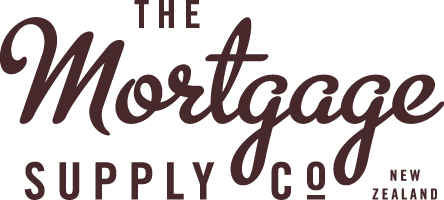
In the current lending environment, Kiwis are presented with shiny historically low interest rates, the removal of LVR restrictions, and a tonne of advertised opportunity to enter the property market and own their own slice of New Zealand. However, to the frustration of many buyers, the reality of the current market is that policies are changing every single week.
We're seeing through our interactions with the banks that despite the record breaking interest rates available, banks are actually increasing their restrictions when it comes to approving applications and assessing borrowers' credibility. Understandably from the banks' perspective, they only want to responsibly lend and ensure that their customers are able to make repayments should the market rates change.
The problem with this mentality is that the hoops borrowers have to jump through in order to take out a mortgage are enough to put off customers from borrowing as soon as they hear their first 'no' from their bank.
So what can you do to make sure you hear that satisfying 'yes' from your loan application?
We give an update from the mortgage broker trenches this month on what's happening with Kiwi applications and lenders, to hopefully offer some insight on the best ways to get the banks on your side. At the end of the day, a good rate only matters if you get approval first.
Turn around times for loan applications are longer than usual
The first thing we're noticing on the whole is that the turn around times for home loan applications have increased to between 5-7 days, where as typically they usually sit at around 3-4 days - and that's calculated from the day all of your documents are packaged and sent.
When you first head into your mortgage brokers you'll be interviewed to asses your requirements and get an understanding of your current situation. From there, we'll get together the specific documents the banks require, package it all up into a tidy bundle and push it through to the banks.
As you can imagine, this whole process takes time. We point this out in particular so that our clients can factor in enough time between when they need their loan approved and when the get the ball rolling. As there's a high volume of application and policies are changing weekly, assessments are taking longer overall to complete.
The good news is, your mortgage adviser will help you to understand accurately what is required of you - it's our job to know the ins and outs of these policy changes and what banks will be looking for when you apply. In addition to this, while we work with banks day in and day out, we're building strong relationships, which more often than not means we can 'jump the queue' and speed up the application progress.
Our best advice is to get prepared early, understand what the time lag means for you and leverage your relationship with your adviser to get the best outcome possible.
LVR restriction removal actually means stricter approval criteria
When the LVR restrictions were first lifted by the Reserve Bank, the market was somewhat uncertain on what impact it would have for the average home buyer in New Zealand. What we're noticing now as a general trend, is that because the restrictions have been removed the banks are becoming increasingly strict and demanding when it comes to loan applications.
So what has changed since pre-COVID-19 bank lending days?
Put simply, the banks used to have a pool of money allocated for high LVR lending (think borrowers with a 15% deposit or less). Now that there is no restriction or 'allocated pool of money', banks want to be more certain than ever that the people they're lending to at a high LVR can afford to cover their loan repayments long term.
That means banks need to see evidence of:
- Good account conduct
- A display of affordability in statements
- Good credit history
Most importantly, banks are looking for evidence that you can make your loan repayments through the rent + savings = loan repayment formula. Essentially, if you're able to cover what your loan repayments would be at a higher interest rate with your current rent and savings (that you've demonstrated consistency in paying) the banks are more likely to lend to you.
The gap between interest rates and service rates has increased
First and foremost, this is a bit of a gripe in the mortgage broker industry as we're constantly pushing for a fairer assessment in this area from banks.
Here's how it works:
Say you're offered the lowest possible and most appealing interest rate from your bank, which currently in New Zealand sits at around 2.65%. When you apply for a loan at this rate, the banks will test your income against a much higher rate to ensure that you can meet repayments should interest rates go up in future.
In the past, the gap between the interest rate you're offered and the service rate you're tested against has been much smaller. Take for example back in 2015 when the average interest rate sat at around 3.5%, the service rate that applicants were tested for was around 7%.
In 2020, the interest rate has dropped to 2.65%, yet the service rate has stayed sitting around the 6.5 - 7.5% mark, depending on the bank. This can make it quite difficult for a first home buyer who could comfortably meet the 2.65% interest rate repayments be approved for a home loan.
Of course, the benefit of working with a mortgage broker is how well versed we are in every nuance of each bank. We know the testing rates, we know the changes that are being made week on week and where wriggle room exists, and we're able to leverage our relationships to get our customers who apply for home loans across the line.
A three-tiered approach can get your foot in the door when the bank says no
At the Mortgage Supply Co. we take a three-tiered approach when it comes to sourcing lenders:
- Banks
- Near-banks
- Non-banks
We're noticing that a really useful and viable option for our customers who are finding it difficult to meet lending criteria post COVID-19 in New Zealand, that near-bank lenders are a brilliant option.
From a customer's perspective, when they head into a bank and apply for a loan, if they get a 'no', they might be put off from applying at other banks, and definitely don't consider non-bank or near-bank lending options. Here's how each options differs in a nutshell:
Bank lender:
Traditional banks with best rates, cashback and loan products. This comes with the stringent assessments.
Near-bank lender:
Rates can be in the low 3% for Premium Products all the way to 8% depending on what the client situation is. Great option when the Bank’s say no. Can work closer to reality with servicing rates and assessment criteria, when the numbers are tight this can be the difference from getting the job done, or not.
Non-bank:
Typically asset based lending where equity/deposit holds a lot more value than Bank and Near-Bank. Long and Short term products available. The short term product can often see servicing criteria being minimal as long as the lender understands the strategy on how you can exit the lending (e.g sale of property or lump sum debt reductions)
The main message here is that there are other options, and if the tough climate for loan approvals makes it difficult for you to secure a loan easily, we're happy to help our customers explore other responsible lending options and go down the right route to a 'yes'.
How can the borrower 'win' in this climate?
We're pretty excited to say that we're absolutely inundated with Kiwis applying for home loans through the Mortgage Supply Co. at the moment, which tells us not only that New Zealanders are interested in taking advantage of the deals available at the moment, but that borrowers are winning at becoming successful applicants.
However, we cannot stress enough how quickly rules and policies are changing week on week. That means that now more than ever, it's in home buyers best interests to use a mortgage adviser to navigate through the uncertain market conditions.
It’s almost like matchmaking. We’re finding the right lending home, tailored to each individual client's personal situation, and streamlining the process, and as we tell a lot of our clients, you don't know what you don't know - so it's always best to get in touch with a team that's in the know to give yourself the best possible shot at a 'yes'.










